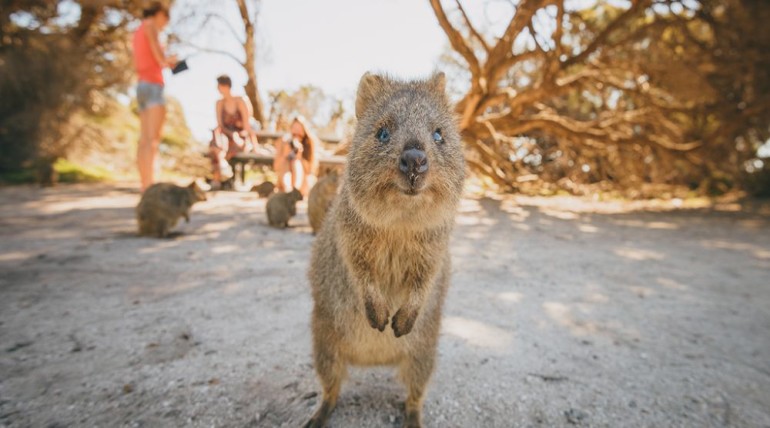Sponsored Listings:
There are 63 crystal-clear bays, 20 white-sand beaches and 8000-10,000 furry little locals, writes David Skipwith.
It’s easy to see how confused early European visitors mistook the quokkas on Rottnest Island for rats — but these little marsupials are heaps cuter.
No trip to Perth is complete without an escape to the offshore paradise of Rottnest. A half-hour drive from Perth to Fremantle and you’re just a 19km ferry ride away from Rotto’s pristine white-sand beaches and crystal-clear waters.
Rottnest’s laid-back atmosphere, picturesque scenery and idyllic outdoor surrounds make it popular with West Australian locals and interstate and international visitors.
The largest in a chain of limestone islands and reefs, Rottnest measures close to 19sq km in area and is an A-Class Reserve, ensuring all plants and animals on the island are protected.
There are no cars on Rottnest; bicycles are the favoured mode of transport, which adds to the relaxed pace, while helping you actively explore the 63 bays and 20 beaches.
Waiting to greet you are the quokkas — Rottnest’s only native mammal and the island’s mascot — with around 8000-10,000 of the furry nocturnal herbivores making them hard to miss.
In 1696, a Dutch sea captain named the Island Rottnest, or “Rats’ Nest”, after mistaking quokkas for rats.
Though a quokka selfie remains a must for any visitor, resist the urge to touch them or share your food with them.
You’ll have no trouble finding a beautiful spot around the island to enjoy a swim, with the coral reef and diverse marine life making for great snorkelling; there are also surf beaches such as the famous Strickland Bay for those wanting to catch a few waves.
Approximately 400 species of fish are found within the marine reserve, with 135 different tropical fish swimming in the island’s waters compared to 11 species found off the mainland. Rottnest is also a popular area for migrating humpback whales, bottlenose dolphins, New Zealand fur seals and Australian sea lions.
There’s a variety of accommodation for those wanting to stay on the island (day-trippers won’t want to leave), including camping and basic baches, but I was lucky enough to stay in a private, two-bedroom, ocean-view chalet at the exquisite Longreach Bay, a short 10-minute bike ride from the main centre.
Visitors are spoiled for choice when it comes to food, with the island boasting a selection of quality cafes and restaurants, along with a general store and bakery.
I took a perch on the veranda overlooking the water at Thomsons restaurant, for a lunch-time beer.
Doubling down on an entree of calamari and basket of fresh fish and chips helped me refuel for an afternoon checking out the swimming and snorkelling spots.
For dinner, I checked into Hotel Rottnest, a beautifully restored historic building, where I enjoyed a perfectly cooked steak accompanied by a glass or two of Western Australian red.
For breakfast the following morning I strolled 300m from my chalet to the secluded Geordie’s Cafe and Art Gallery at spectacular Geordie Bay.
Leaving Rottnest is the hard part, but once you’ve returned to Fremantle take the time to explore — I recommend starting with lunch and a tour of the Little Creatures brewery, close to the ferry terminal, before a stint of shopping.
Fans of Aussie rock music can pay homage to Bon Scott — the late former frontman of AC/DC is immortalised in a bronze statue showing him standing atop a Marshall amplifier in Fishing Boat Harbour.
The “Dark Tourists” among us can even visit Scott’s gravesite where a memorial plaque marks his resting place within Fremantle Cemetery.
Meanwhile, tours of the old Fremantle Prison reveal the conditions early convicts were subjected to.
Fremantle is full of diverse attractions but you’d be doing yourself a disservice if you were to make it that far without venturing to Rottnest.
Source: nzherald.co.nz










